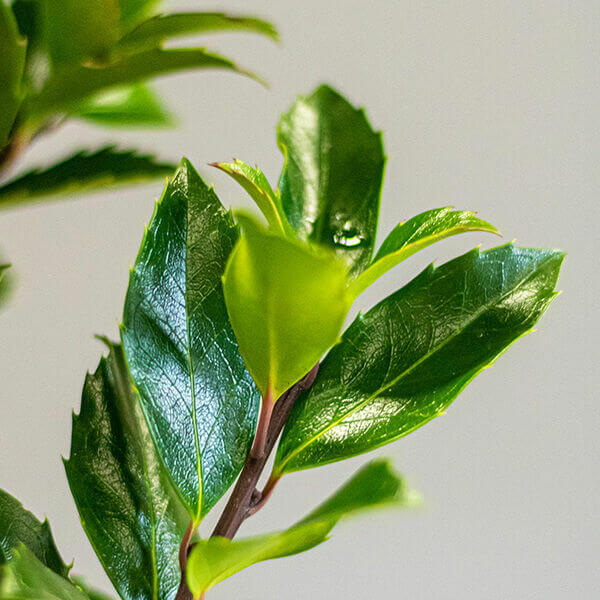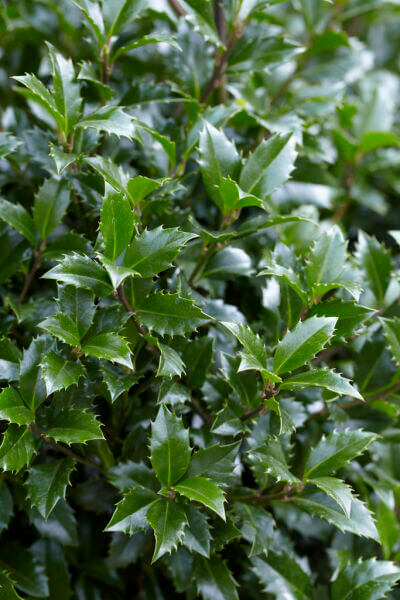Best Hedging Plants For Texture
Improve your garden's attraction with lavish hedge ranges such as Yew (Taxus), Thuja, Laurel, Photinia, and Bamboo, celebrated for their structural integrity and environmental advantages.
Yew and Thuja provide evergreen protection and winter strength, while Laurel offers fast development and broad, fragrant leaves.
Photinia adds seasonal appeal with its lively red foliage, and Bamboo provides a low-maintenance, peaceful atmosphere.
These hedges improve air quality, lower noise, and develop tranquil, personal spaces.
Appropriate planting, spacing, and maintenance guarantee energetic growth and environmental consistency.
Check out how these lavish ranges can elevate your garden's appeal and wellness.
Secret Takeaways
Transform Your Garden With Lush Hedge Varieties
- Select Yew for its dense, evergreen development and unequaled durability.
- Opt for Laurel for its fast growth and broad leaves, making sure fast privacy.
- Select Photinia for its lively seasonal foliage, which turns a striking dark red.
- Utilize Bamboo for a low-maintenance, winter-hardy hedge with aesthetic appeal.
- Area plants 2-3 per meter and prune routinely for ideal development and health.
Popular Hedge Plants
When changing a garden with lush hedge varieties, it's important to think about popular hedge plants such as Yew, Thuja, Laurel, and Photinia due to their special attributes and advantages.
Yew (Taxus) is extremely esteemed for its longevity and dense, green growth, making it a prime choice for enduring landscapes.
Thuja is noted for its evergreen foliage and robust winter resilience.
Photinia adds seasonal vibrancy with red leaves that darken over time, creating vibrant visual appeal.
Laurel uses quick development and aromatic, broad leaves, suitable for quick privacy.
In Addition, Bamboo is an excellent option for atmosphere, providing a low-maintenance, winter-hardy choice that enhances the garden's visual with its classy, swaying walking canes.
These choices cater to a variety of horticultural needs and choices.
Advantages of Garden Hedges
Garden hedges provide a wide variety of benefits, making them a valuable addition to any landscape. These natural barriers are cost-efficient to carry out and offer significant wind defense, improving air circulation and adding to sound reduction. The thick foliage of hedges like Thuja and Beech guarantees privacy by blocking visibility, developing a peaceful and remote environment.
Hedges also play a vital function in microclimate policy, offering a steady environment that cultivates plant growth and minimizes temperature changes. Their complex leaf structures filter contaminants, improving air quality and adding to a healthier garden ecosystem.
Additionally, hedges excel in sound reduction, soaking up and deflecting sound waves to lower ambient sound levels. This dual functionality of supplying both visual and acoustic personal privacy enhances the general tranquility and aesthetic appeal of any garden.
Planting and Upkeep Tips
For a successful hedge, meticulous preparation of the planting location is essential. Make sure the soil has correct pH and drainage to support strong root advancement.
Area the plants appropriately for the selected types. Water the hedge regularly during its initial development stage, changing as needed with seasonal changes.
Execute a organized bug control and disease prevention technique, utilizing chemical or organic treatments when required. Routinely examine for aphids, termites, and fungal infections.
Apply mulch to maintain moisture and suppress weeds. Seasonal pruning promotes dense growth and air flow, vital for plant health.
Following these standards will assist you cultivate a lively, well-maintained hedge that enhances the charm of your garden.
Spacing and Trimming Guidelines
Spacing and Trimming Guidelines
Proper spacing and cutting are essential for cultivating healthy, aesthetically appealing hedges. Adequate spacing guarantees each plant gets sufficient nutrients, light, and airflow.
Follow these standards for optimum hedge maintenance:
- Spacing: Position hedge plants 2-3 plants per meter to encourage robust growth.
- Pruning Techniques: Routine pruning is necessary for keeping wanted hedge height and shape. Cut brand-new development in summertime and cut back older wood during winter season.
- Seasonal Care: Change cutting schedules and approaches according to seasonal requirements to make sure plant health.
- Hedge Height: Frequently screen and trim to preserve the desired hedge height and achieve consistent looks.
Sticking to these steps will guarantee your hedge prospers, improving both the appeal and functionality of your garden.
Picking the Right Hedge
Selecting the Right Hedge
Selecting the appropriate hedge includes examining hedging plants elements such as mature height, foliage density, and ecological strength. Effective hedge plant selection needs understanding each species' growth qualities and site-specific flexibility.
For example, Yew (Taxus) uses outstanding durability and thick growth, while Thuja is significant for its winter strength. Furthermore, thinking about maintenance requirements is crucial; fast-growing types like Laurel or Privet need routine trimming, whereas low-maintenance choices like Bamboo or Ivy might be more effective for those seeking very little maintenance.
Environmental aspects such as soil type, light accessibility, and wetness conditions should likewise assist the selection procedure. This careful method makes sure the chosen hedges will prosper, providing both visual and practical advantages to the garden landscape.
Shipment and Planting Guidance
To guarantee your hedge plants thrive, they ought to be provided by specialized carriers and planted promptly upon arrival.
Follow these vital actions for effective planting:
- Soil Preparation: Enrich the soil with natural matter to enhance drain and nutrient content.
- Planting Depth: Create a trench two times the width and equal to the depth of the root ball.
- Watering Methods: Water completely after planting, keeping the soil consistently wet however not saturated.
- Mulching: Apply a layer of mulch to keep wetness and reduce weeds.
Customer Assistance and Service
Given the essential role of prompt assistance in horticultural pursuits, our client assistance team is offered six days a week through telephone, email, and social media to offer professional recommendations and promptly deal with any concerns. Their commitment to quick reaction times guarantees client complete satisfaction by fixing questions connected to plant health, optimum planting approaches, and upkeep schedules.

Interaction Technique
Within 24 hr
Within 24 hr
This thorough support system, reinforced by an outstanding 9.3/ 10 client score, highlights our dedication to boosting the gardening experience for every single customer.
Regularly Asked Concerns
How Long Does It Take for Hedge Plants to Develop?
Hedge plants generally need one to three years to become fully established, with the exact period differing by types and growing conditions.
Reliable care throughout this important duration is vital for robust growth. Consistent watering, watchful weed control, and suitable fertilizer application are pivotal in promoting strong root development.
For instance, fast-growing types like Laurel might develop faster, while slower-growing varieties such as Yew may take longer. Thorough maintenance speeds up the facility procedure, leading to dense and healthy hedges.
What Are the Best Hedge Plants for Privacy?
The question of the very best hedge plants for personal privacy involves assessing evergreen and deciduous options.
Evergreen hedges like Thuja, Laurel, and Cypress provide year-round protection, guaranteeing continuous privacy.
On the other hand, deciduous hedges such as Beech provide seasonal privacy, shedding leaves in cooler months.
Key maintenance pointers for privacy hedges include routine trimming, fertilizing in spring, and correct spacing-- usually 2 to 3 plants per meter.
Furthermore, constant watering and persistent weed removal are vital for promoting healthy, dense development.
Can Hedge Plants Draw In Wildlife to My Garden?
Yes, hedge plants can bring in wildlife to your garden by offering essential advantages like shelter, food, and nesting sites, consequently enhancing regional biodiversity. Yew, holly, and laurel are excellent for drawing in birds, while ivy supports a variety of bugs.
Nevertheless, it is very important to keep in mind that there are some disadvantages, such as increased upkeep to manage insects and routine upkeep. Carefully picking and maintaining hedge ranges can assist balance these benefits and downsides, eventually fostering a dynamic and sustainable ecosystem in your garden.
Are There Any Flowering Hedge Plants Available?
Yes, there are flowering hedge plants readily available that can enhance the charm of your garden.
For instance, Elaeagnus, likewise called Olive Willow, produces fragrant white flowers in the fall, adding a touch of sophistication.
Photinia, another popular option, showcases vibrant red leaves that develop into an abundant green, developing a vibrant visual result throughout the seasons.
To ensure these plants flourish, it's important to practice correct pruning strategies and seasonal maintenance, such as trimming new growth in the summertime and cutting down in the winter season.
These procedures will assist keep the health and visual appeal of your blooming hedges.
How Do I Avoid Bugs in My Hedge Plants?
To avoid bugs in hedge plants, use natural bug control approaches and keep correct hedge care. Present helpful pests like ladybugs, which victimize damaging bugs, to develop a well balanced community.
Frequently check your hedges for indications of invasion and immediately eliminate any affected parts to prevent the spread. Ensure the health of your hedges by using well balanced fertilizers and offering sufficient water.
Use mulching to retain soil moisture and correct spacing to minimize plant stress and promote robust growth. These practices jointly assist in lessening insect issues and keeping a healthy hedge.
Conclusion
In essence, picking the best hedge varieties such as Yew, Thuja, and Laurel can change any garden into a relaxing haven. These plants provide year-round plant, improve aesthetic appeal, and deal useful benefits like noise decrease and wind security.
Proper planting strategies, accurate spacing, constant watering, and seasonal trimming are crucial for ideal growth.
Dependable shipment services and professional customer assistance ensure a smooth experience from purchase to planting, making it easier than ever to raise your outdoor space.
Garden hedges use a plethora of benefits, making them an important addition to any landscape. These natural barriers are economical to implement and offer significant wind security, enhancing air flow and contributing to noise reduction. The thick foliage of hedges like Thuja and Beech guarantees personal privacy by obstructing exposure, developing a secluded and peaceful environment.

Pruning Methods: Regular pruning is essential for keeping preferred hedge height and shape. Trim brand-new development in summer and cut back older wood throughout winter.
Comments on “Best Hedging Plants For Cottage Boundaries”